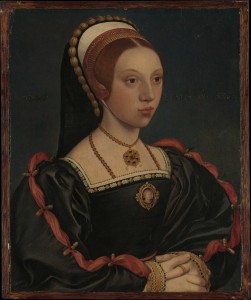
Eustace Chapuys, the imperial ambassador, reported to the Queen of Hungary:
“On the evening of the 6th the Privy Councillors returned and stayed nearly all night deliberating in the King’s apartments, and then the day after, night and day, at the house of the bp. of Winchester, where it was resolved to discharge most of those who were at Hampton Court with the Queen, all coffers and chests being sealed and the doors guarded. Among others who remained inside the palace was the abp. of Canterbury, who has charge of everything.”1
As I mentioned in my previous articles on this event, Cranmer and Norfolk did not confiscate Catherine’s keys to her apartments, so she could move between her chambers and she certainly wasn’t confined to one room. However, it was ‘house arrest’ and that, combined with the fact that her jewels were seized, shows that Catherine was in big trouble. Realising this, Catherine burst into tears and became hysterical. Archbishop Cranmer recorded in a letter to Henry VIII:
“I found her in such lamentation and heaviness, as I never saw no creature; so that it would have pitied any man’s heart in the world to have looked upon her: and in that vehement rage she continued, as they informed me which be about her, from my departure from her unto my return again […]”2
The hysterical queen could not be interrogated and so Cranmer arranged to visit her the next day.
Notes and Sources
- Letters and Papers, Foreign and Domestic, Henry VIII, Volume 16, 1540-1541, 1328.
- The Remains of Thomas Cranmer, Archbishop of Canterbury, Volume 1, p307-308.